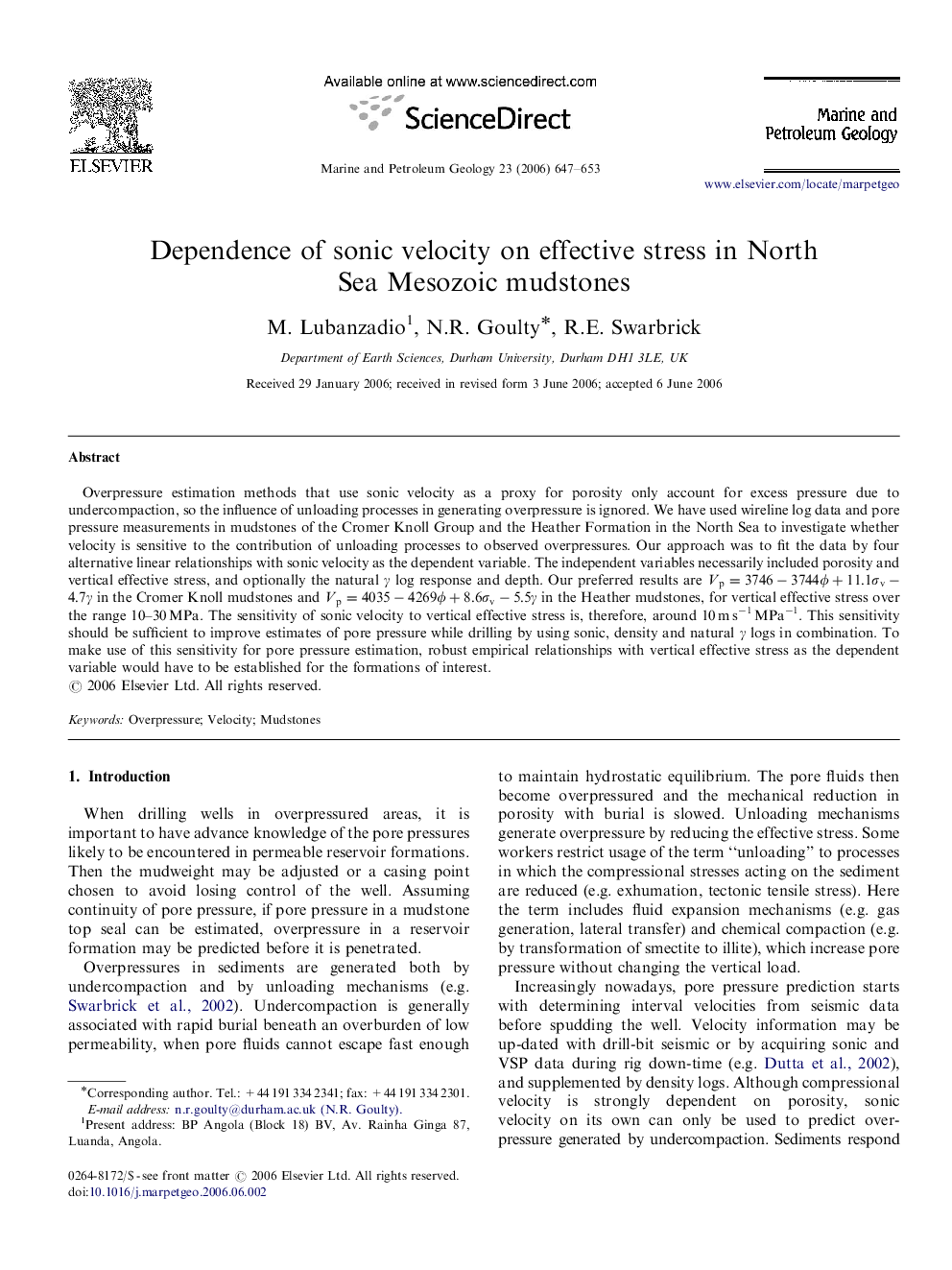| Article ID | Journal | Published Year | Pages | File Type |
|---|---|---|---|---|
| 4696751 | Marine and Petroleum Geology | 2006 | 7 Pages |
Overpressure estimation methods that use sonic velocity as a proxy for porosity only account for excess pressure due to undercompaction, so the influence of unloading processes in generating overpressure is ignored. We have used wireline log data and pore pressure measurements in mudstones of the Cromer Knoll Group and the Heather Formation in the North Sea to investigate whether velocity is sensitive to the contribution of unloading processes to observed overpressures. Our approach was to fit the data by four alternative linear relationships with sonic velocity as the dependent variable. The independent variables necessarily included porosity and vertical effective stress, and optionally the natural γγ log response and depth. Our preferred results are Vp=3746-3744φ+11.1σv-4.7γVp=3746-3744φ+11.1σv-4.7γ in the Cromer Knoll mudstones and Vp=4035-4269φ+8.6σv-5.5γVp=4035-4269φ+8.6σv-5.5γ in the Heather mudstones, for vertical effective stress over the range 10–30 MPa. The sensitivity of sonic velocity to vertical effective stress is, therefore, around 10 m s−1 MPa−1. This sensitivity should be sufficient to improve estimates of pore pressure while drilling by using sonic, density and natural γγ logs in combination. To make use of this sensitivity for pore pressure estimation, robust empirical relationships with vertical effective stress as the dependent variable would have to be established for the formations of interest.
